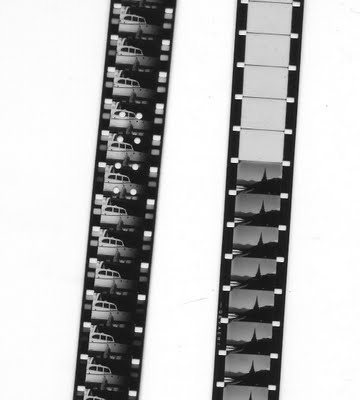User:Mathijs van Oosterhoudt/projectprop1
Finding Footage
Introduction
Over the past years I have slowly collected an archive of found footage in every form possible. From written notes found on streets, old letters from times gone by, reel after reel of super 8 films, micro-tapes from personal sound recorders, old negatives, modern passport portraits, e-mail inboxes and what not. I find these glimpses into other people's life fascinating, as in every bit of material there's a narrative, sometimes obvious, sometimes hidden.
This year I want to work on finding a form to present my own fascination and narratives from this material in a final work. As for now, I am unsure on what form it will exactly take. Whether it will be a fixed-length film, a dynamic film which constantly re-iterates the material to make a new narrative time after time, an installation that allows people to browse the material in a more accessible way, a work that creates it's own narrative based on the material found or something else entirely. I do however want to avoid the thought or feel that it becomes a mishmash of material that is randomly put together.
Relation to previous practice
This work relates to the core of most of the work I've done before, namely in that instead of creating new content, it seeks out existing content and represents that material, whether it's digital or analogue, in a different context than originally intended. An example of such way of working is the installation Flutter, presented at the children film festival Cinekid. It takes the shapes of kids putting their hands on the piece, transforming them into butterflies projected on another screen and joining the dozens of other hands already flying around. Another, Memoirs de Madame Brinvillers, takes incoming spam messages from an inbox and searches for specific patterns to create poetry out of various offers and scams, creating texts that are both readable yet feel off at the same time. Lastly, a project from last year, geoWords creates maps showing the usage of certain tags based on their geographical location, by taking the GPS data from Flickr photos related to these tags.
In each of these projects the material already exists, but is viewed in a different context. The material is usually run through computer-regulated algorithms to create it's new form.
Relation to a larger context
-
Practical steps
In some order;
Organizing the existing archive. (Sort things by medium and age)
Curating the archive.
Making many short experiments / prototypes exploring the different possibilities / mediums that are present in the archive as-is.
Use these prototypes as a way to exclude or include specific mediums and make the list of a literal endless possibilities one with finite options which makes the archive easier to work with.
Find it's relevance towards our contemporary society, what does it say that this material is used or edited nowadays?
References
Jaimie Baron - The Archive Effect: Found Footage and the Audiovisual Experience of History
William C. Wees - Recycled Images: The Art and Politics of Found Footage Films
Paula Amad - Counter-Archive: Film, the Everyday, and Albert Kahn's Archives de la Planète
Sheila Curran Bernard - Archival Storytelling
Craig Baldwin - Tribulation 99: alien anomalies under America
Jaap Guldemond, Marente Bloemheuvel, Giovanna Fossati - Framing Film - Found Footage: Cinema Exposed
Jaap Kooijman, Patricia Pisters, Wanda Strauven - Mind the Screen : Media Concepts According to Thomas Elsaesser

